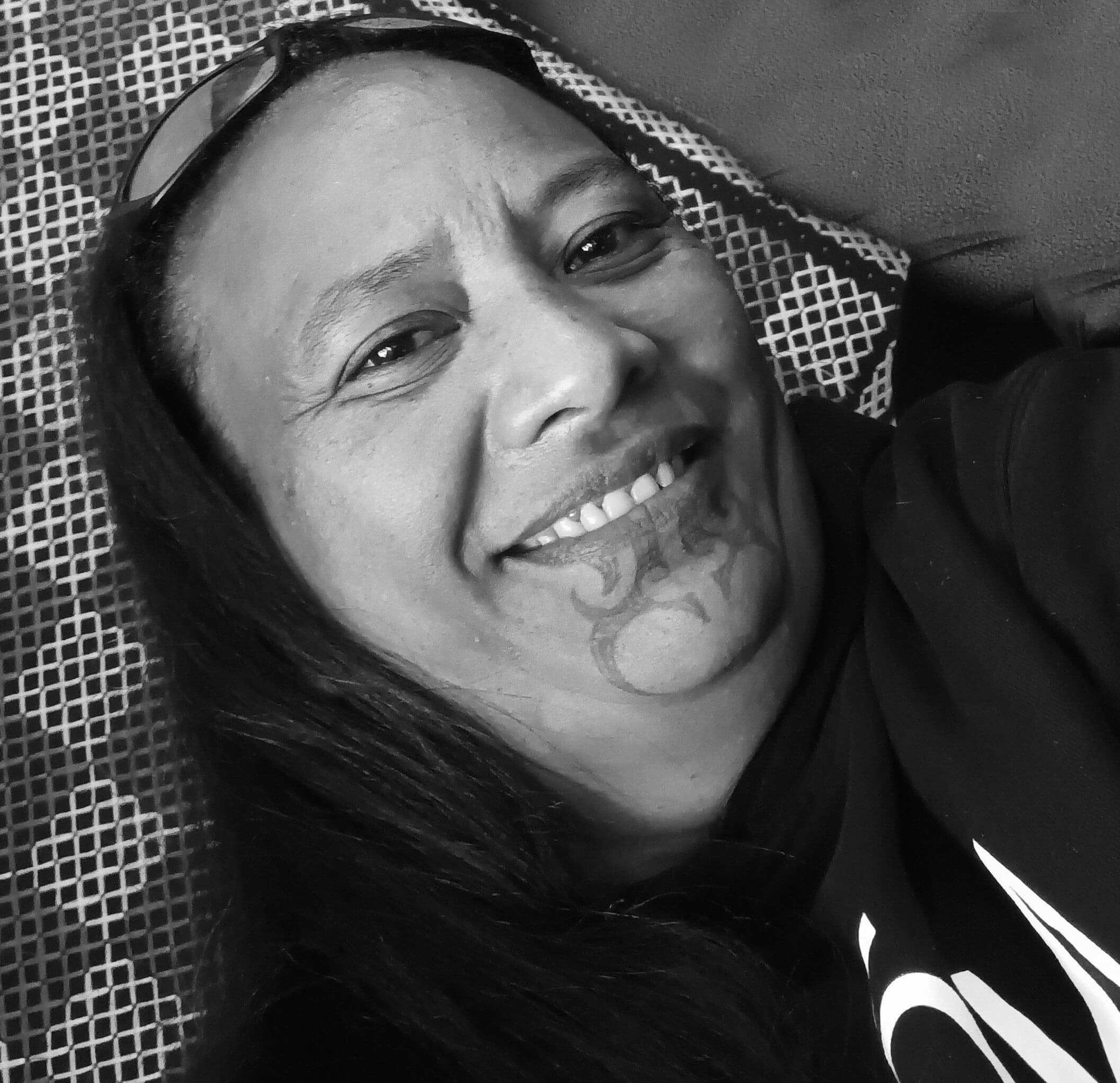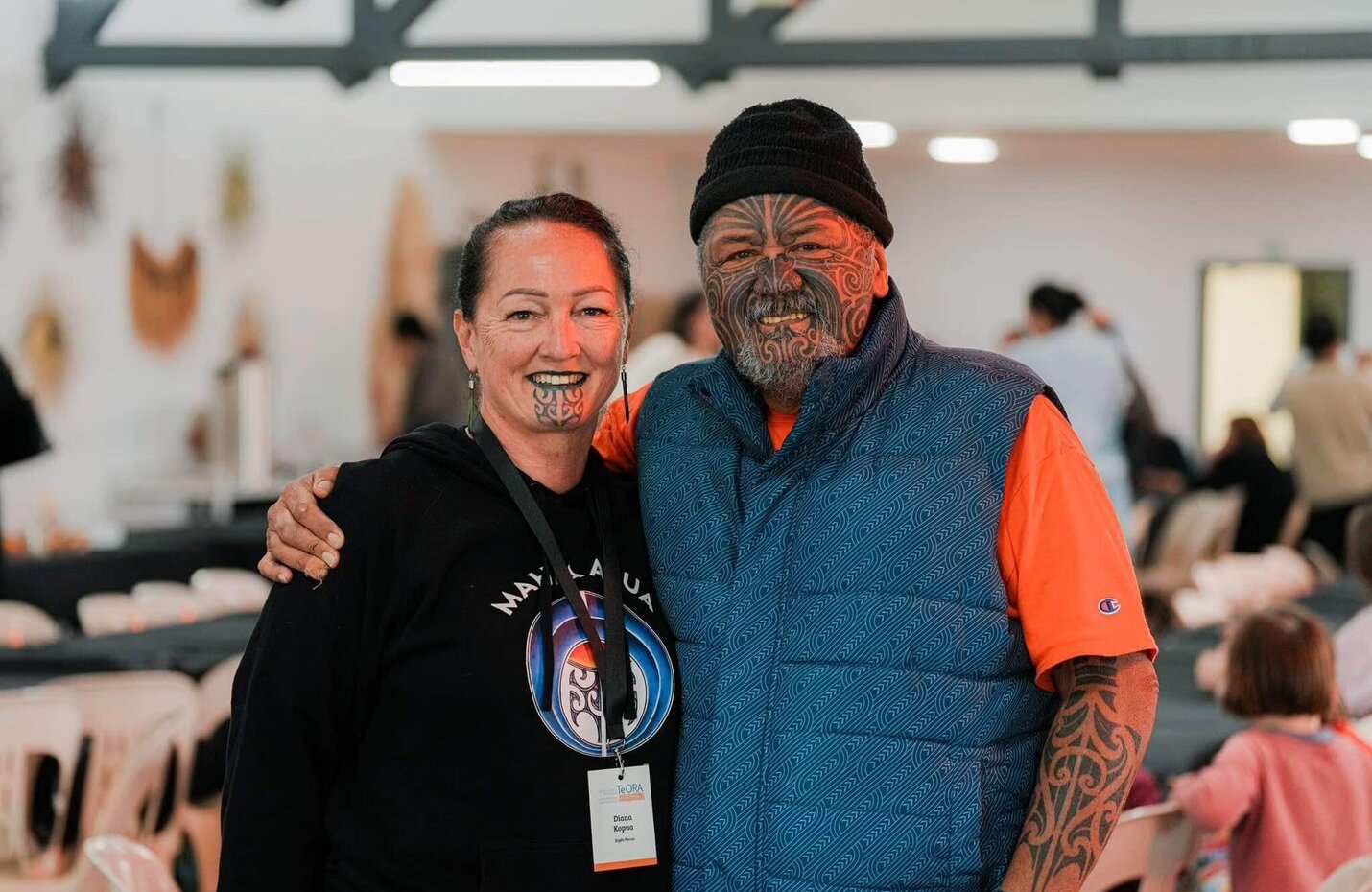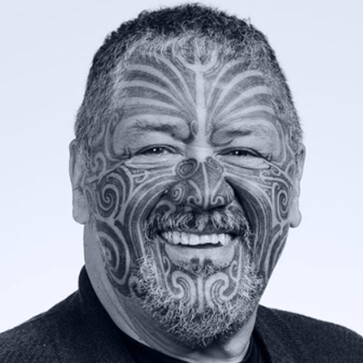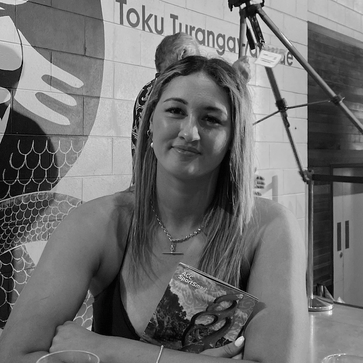About Us
Te Kurahuna was established by Diana and Mark Kopua to support whānau, hapū, and communities through the practice of Mahi a Atua. Our work began in Tūranganui-a-Kiwa and remains deeply connected to the people and places that shaped it. As co-founders, we bring different skills but a shared commitment to disrupting harmful systems and restoring oranga through whakapapa.
Mahi a Atua is the foundation of our work. It centres Indigenous knowledge as essential to the way forward - not as an alternative, but as a birthright. Through Mahi a Atua wānanga, we create spaces where people can reconnect with pūrākau, challenge harmful systems, and see themselves as part of the change. We believe everyone has the potential to lead, heal, and disrupt - together.
Meet our Team
Mark Kopua
Mark was raised in Mangatuna, by his old people and is considered a historian by his East Coast tribes of the North Island in New Zealand; Te Aitanga a Hauiti, Ngāti Ira and Ngāti Porou. He was the master carver for several meeting houses both on the East Coast as well as in the lower North Island. He and a small group of moko artists are responsible for the reinstatement of moko into New Zealand society. Mark has been employed in many national and international roles and one unique role has been to provenance artefacts. For many years he was a board member of the national Māori art advocacy, Toi Māori. He has trained several moko artists and continues to work as a moko artist and design consultant in addition to holding the position as a co-director for Te Kurahuna. He is a confident facilitator of whānau hui and his approach to healing is celebrated by communities as he embraces his unique skills as a storyteller and keeper of ancient Māori knowledge and whakapapa.
Dr Diana Kopua
Diana is of Ngāti Porou descent although raised in Porirua under the umbrella of Ngāti Toa. In 1990 Diana began her journey in the health industry, training first as a nurse. Diana developed Mahi a Atua in the mid-90s and then in 2002 studied medicine at the University of Otago. In 2014 she completed her specialist training in psychiatry and is a Fellow of the Royal Australia New Zealand College of Psychiatry. Mahi a Atua was embedded into several services and it became the philosophy behind the ground-breaking Te Kūwatawata service and Te Hiringa Matua (a parenting and pregnancy service working with families struggling with addictions). These services aim to address institutional constraints that impact negatively on Māori. Diana was the Clinical Lead for both these services in their inception and development. Diana continues to lead change through her collaboration with her husband Mark Kopua and together they are growing a collective of Mataora (change agents who are trained in Mahi a Atua) who work to indigenise their respective communities of practice.
Kelly Burns
Ko Whetumatarau rāua ko Maungakaka ōku maunga
Ko Awatere rāua ko Waipapa ōku awa
Ko Hinerupe rāua ko Matahi O Te Tau ōku marae
Ko Te whanau a Hinerupe rāua ko te whanau a Tuwhakairiora ōku hapū
Ko Ngāti Porou tōku iwi
Ko Kelly ahau
In 2010 Kelly qualified as a registered nurse in Gisborne and began her nursing career in Te Tairawhiti. For 12 years she worked in the general surgical ward. Whanau Māori has always been her passion and for those years as a nurse she strived to provide Māori with the best possible care. However, none of that passion or mahi was changing health outcomes for Māori, the statistics remained terrible!
Kelly left the job she thought she would have forever to undertake a new journey with Te Kurahuna, a kaupapa she had heard about and saw as a light at the end of the tunnel for her people. Working within Te Kurahuna and utilising the principals of mahi a atua has given her the strength to reclaim her Maoritanga and renewed her hope for our people .
No Te Araroa, Tikitiki, Rangitukia, Te Whānau a Apanui, Te Aitanga a Hauiti whakawhiti atu ki Waikato.
Meet Hinewaipounamu, a remarkable individual who embodies the spirit of Te Ao Māori and excels in the world of sports. Hailing from a Māori upbringing in Kura Kaupapa Māori and Kohanga reo, she has a deep-rooted connection to her culture and carries it with pride. With a burning passion for sports, Hinewaipounamu has risen to become a world champion in Waka Ama, showcasing her exceptional skills and determination. Now, she joins our team, bringing her expertise in both Te Ao Māori, information technology and marketing, providing invaluable support in these fields. Hinewaipounamu's diverse talents and rich cultural background make her a truly valuable asset to our team.
Ko Tokerau, ko Parakioreore ngā maunga
Ko Taumārere, ko Maruarua ngā awa
Ko Hineāmaru raua ko Kawiti ngā tūpuna
Ko Ngāti Hine, ko Ngāti Kahu o Torongare ngā hapu
Ko Ngāpuhi te iwi
Ko Lisa Cherrington ahau
Raised under the korowai of Rangitāne in Palmerston North, Lisa also has Niuean, Samoan and Irish whakapapa. She is a novelist, scriptwriter, māmā to two boys, and is also a regular Iron Māori competitor. Lisa was first introduced to Mahi a Atua by Dr Di in the late 1990’s whilst working as a clinical psychologist at Te Whare Marie in Wellington. She has continued to advocate for and utilise pūrākau and Mahi a Atua throughout her career and attended her first Rangi Parauri training in 2022 when she joined the Te Kurahuna team as a Mataora.

Tania Barbarich
Ko Karioi, ko Te Kaokao-roa-o Patetere, ko Rangipaoa nga maunga
Ko Waikato, ko Rapurapu, ko Hāparapara nga awa
Ko Tainui raua ko Mataatua nga waka
Ko Poihākena, ko Ukaipo, ko Otuwhare nga marae
Ko Ngati Koata ki Whaingaroa, ko Ngati Kirihika, ko Te Whanau a Rutaia nga hapū
Ko Tainui, ko Ngati Raukawa, ko Te Whanau a Apanui nga iwi
Ko Whaingaroa raua ko Omaio nga moana
Ko au te uri o nga whanau Kereopa, Whaiapu me Wharepapa
Ko Tania-Lee Whetu-Ote-Haahi Barbarich
Tania grew up in Whaingaroa and on the Kaimai ranges and have lived in Turanga nui a Kiwa for over 20 years. Married her beautiful tane from Motu, Te Aitanga a Mahaki 14 years ago is a Māmā to five babies ranging in ages from 17 years to 1 year old.
One of our whānau was moved by her Mahi a Atua experience and wrote this kōrero tairitenga:
Innate shapeshifting
By DNA
Mai Hawaaiki, from hawaaiki we unfurl
Ki Hawaaiki, to all the way back there again
And again
And again
So I’m out here driving my ancestral superhighway
Without a driver’s license
Helm of my own waka
Beneath the stars
Beacons of cultural navigation that traverse ions of time
But I’m not yet confident to read
Or maybe it’s trust
Or maybe a type of spiritual dyslexia
That I feel connection
As sure as my pulse
I am my ancestors
Mahi a Atua is a refuge
A space to make sense of the murkiness
A place where we shapeshift between rehutaitanga and hukuataitanga
And then harness the confidence to take it out for a spin.
By Dayle Takitimu 14.06.2017
Who we sponsor & support
Horouta Waka Hoe
Ngati Porou East Coast Rugby League
Givealittle - Brightwell whānau cyclone Gabrielle
Givealittle - Waewae 35
U15 National Basketball Ngati Porou Poneke
Hinewaipounamu Rangihuna Waka ama worlds NZ team captain







